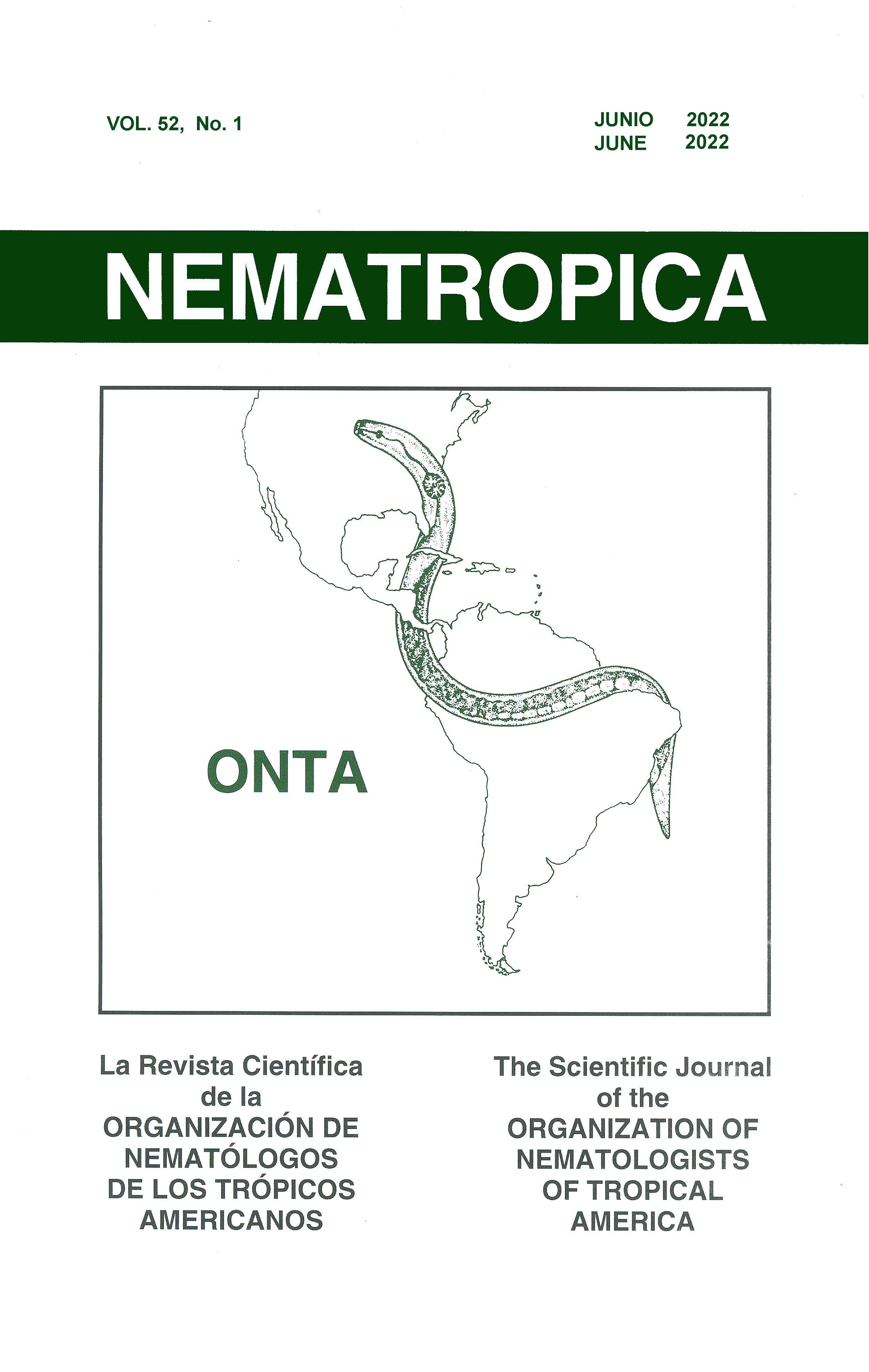MANAGEMENT OF DRY ROT DISEASE OF YAM WITH CASSAVA WASTEWATER
Abstract
Dry rot disease caused by the plant-parasitic nematodes Scutellonema bradys, Pratylenchus coffeae, and P. brachyurus limits yam (Dioscorea spp.) yield in Brazil. As a result, the development of strategies to reduce agricultural losses caused by these plant-parasitic nematodes is required. The objective of this study was to evaluate the effect of cassava wastewater (manipueira) on the management of dry rot under two growing conditions (without or with supplemental irrigation) and on soil chemical characteristics. The following treatments were considered: manipueira concentrations diluted in water (10, 25, and 50%), volume of applications (3, 5, and 7 L/m on beds), and soil application timing (30 and 120 days after planting); an untreated control was also included. Five months after planting, soil samples from each plot were collected to evaluate soil fertility. At harvest, disease incidence, nematode population densities in soil and crop yield were evaluated. In both experiments, there was no significant interaction between manipueira concentration and volume. An effect only of manipueira volume on the measured variables was observed. In the non-irrigated trial, the application of manipueira to soil reduced disease incidence and nematode population densities and increased fresh weight of yam tubers. In the irrigated trial, a positive effect was observed only at a volume of 5 L/m. In this treatment, total nematode population density was inversely related with soil Ca (r = -0.67, P < 0.017) and nematode incidence with soil Ca and Mg content (r = -0.71, P < 0.012). The volume of 5 L/m manipueira might be suitable for nematode management.

